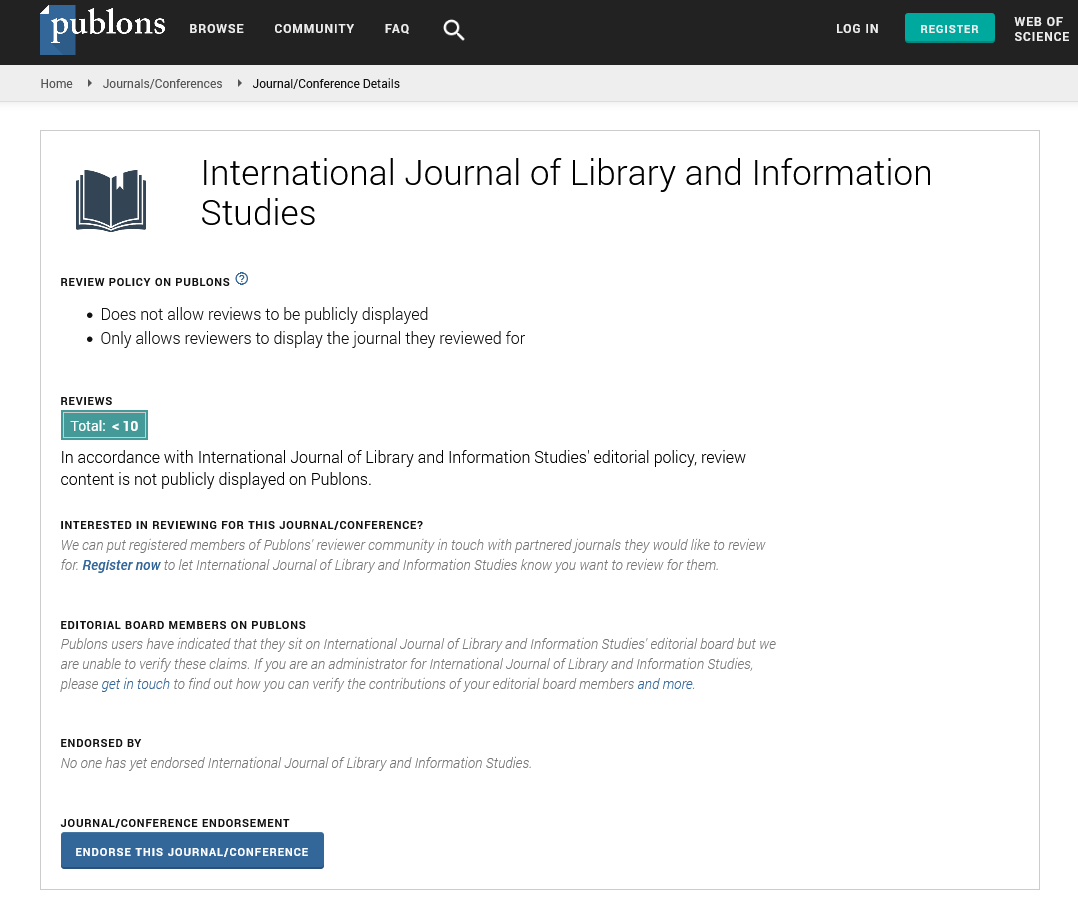

Webometrics Ranking of Institutional Digital Repositories of India: A Case Study
Abstract
Author(s): Paulomi Saha
This study deals with the evaluation of the web presence and webometric analysis of the institutional repositories of India. The calculation of the webpages (size), visibility of the websites of the IDRs, the presence of qualitative rich files of the IDRs and the impact of the IDRs in Google scholar is measured with the help of search engines-Google and Google Scholar and with the required Webometric Ranking Indicators (WRI). The Alternative Document Model (ADM) is obtained from calculating the aggregate of all the above mentioned WRI and based on this ADM rank the final webometric rank of the IDRs is obtained, whereas the IDRs are extracted based on high, medium and low ‘activity’ of the IDRs. Presently, the first 20 IDRs based on High, Medium and Low ‘activity’ of the IDRs each categorized in the search parameter of Registry of Open Access Repositories (ROAR) is taken for the webometric study out of total 123 repositories of India as recorded by ROAR. This paper also shows a comparative study between maximum and minimum responsive IDRs in respect of every WRI along with their ADM and final rank and also based on the High, medium and low activity of the IDRs. Webometric study is significant to measure the impact of universities, IDRs and library websites so that information professionals, library professionals, researchers, students can get a clear idea to access the qualitative websites to fulfil their information need.
Call for Papers
Authors can contribute papers on
What is Your ORCID
Register for the persistent digital identifier that distinguishes you from every other researcher.
Social Bookmarking
Know Your Citation Style
American Psychological Association (APA)
Modern Language Association (MLA)
American Anthropological Association (AAA)
Society for American Archaeology
American Antiquity Citation Style
American Medical Association (AMA)
American Political Science Association(APSA)



